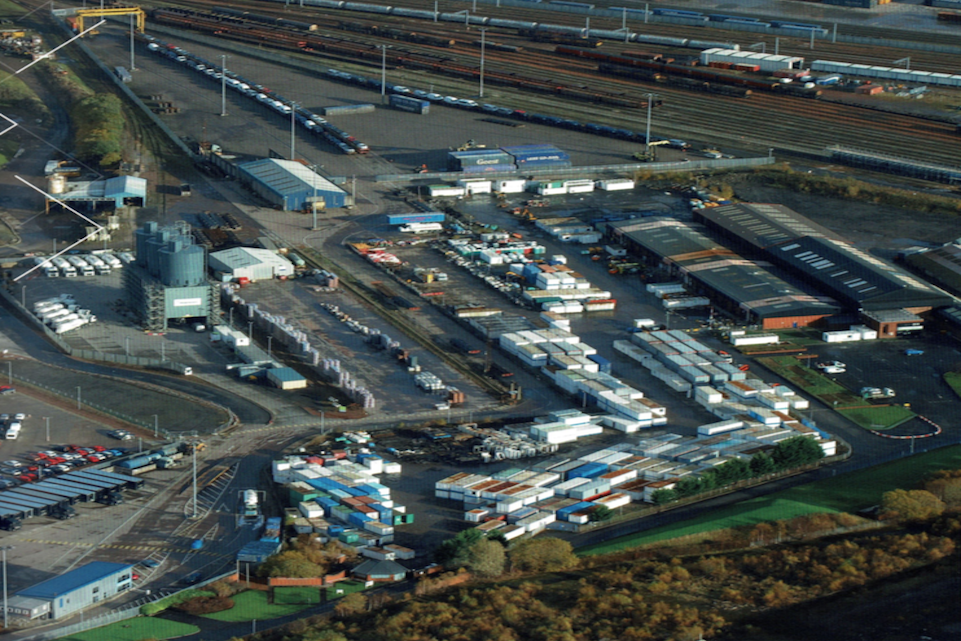Freight figures big in UK Union Connectivity Review

Better connections between the four nations of the UK have been the subject of the UK Union Connectivity Review – an examination of links over the borders of the United Kingdom. Commissioned at the height of the pandemic last summer, consultation of this prestigious review has just closed. The review staff expected a number of well-argued submissions, but may have been surprised by the leading role expressed for rail freight as the backbone of future connectivity around the UK.
With England, Scotland and Wales all sharing the island of Great Britain, and the fourth nation of the UK – Northern Ireland – sharing the island of Ireland with the Republic, connections between the quartet have always been complicated. However, in July of last year, prime minister Boris Johnson instructed his transport secretary Grant Shapps to examine the existing and potential links across the open but culturally significant borders in the UK. With the four nations each being the others’ most important trading partners, movement of goods was always going to be high on the agenda.
Three nations into one will go
Trade routes between England and the two other nations on Great Britain – Scotland and Wales – represent the relatively straight-forward aspects of the connectivity review. However, two arterial routes to Wales (from England) connect with ports to the Republic of Ireland. Therefore, submissions to improve routes through South Wales (to the port of Fishguard) and the route from Crewe to Chester and on to Holyhead, both serve vital trade routes over the sea to Irish ports. Inevitably improved trade routes between England and Wales will benefit Irish trade too. However, there is another, more ambitious plan to improve connections with Ireland, via the enclave of Northern Ireland.
For a century, Northern Ireland has been the remainder of the UK on the island of Ireland. Connections have, for most of that time, been reliant on ferry crossings from Scottish ports. The prime minister has however expressed a desire for a fixed-link over (or under) the North Channel. While that would be a monumental engineering feat, on a par with the Hong Kong – Macau causeway or the Channel Tunnel, it has stirred the imagination of stakeholders in England, Scotland and Northern Ireland.
Greengauge 21
Not so much the fixed link itself, the prospect of rejuvenated trade routes in the UK has spurred on submissions from high-profile bodies around the countries. South of England based transport think tank Greengauge 21 has made a detailed case for any fixed link (they specify a tunnel) to be the focus of a mixed traffic axis, connecting the independent Irish capital of Dublin with the Northern Irish capital of Belfast, and via a sea crossing to the biggest city in Scotland, Glasgow, and the Scottish capital of Edinburgh.

The Greengauge 21 approach calls for a re-establishment of the railway though South West Scotland, connecting the port of Stranraer with Carlisle, and directly into the HS2 project. The geography of the UK lends itself to providing a new link north from Carlisle too, connecting Edinburgh with the new route, which would have capacity reserved for Irish freight.
Campaign for Borders Rail
That approach is also echoed by the High Speed Rail Group, whose own report already called for the ‘Borders Railway’ to be completed, closing the 66-mile (106km) gap between Carlisle and the central Scottish Borders. Nick Bethune, of the influential Campaign for Borders Rail, says that the completion of the Borders Railway makes sense, no matter how far the Union Connectivity Review progresses.
“This clearly helps maximise the return on investment and potential benefits of HS2 services by providing direct onward rail connectivity from the HS2 hub at Carlisle into the Borders region”, he says. The connectivity with the island of Ireland plays further into that scenario. “Releasing capacity on the West Coast Main Line, for long-distance high-speed passenger services, is achieved by provision of a reliable electrified freight route between Carlisle and the central, east and north-east Scotland freight terminals”, Bethune says.

Greengauge 21 go further, by suggesting that freight trade could be well served by a ‘land ferry’, taking traffic – either accompanied or containers – from a Central Scotland hub to Northern Ireland. Potential locations could include the Mossend International Railfreight Park, currently under construction near Glasgow.
Wide differences still to reconcile
However, even if the massive engineering projects of rebuilding over 200km of railway in Scotland, and the biggest ever sea crossing in the British Isles are overcome, there remains one significant barrier to Anglo-Scottish and Irish rail freight. Great Britain runs at standard gauge (1435mm), while the Emerald Isle has the almost unique 1600mm width between the rails – aptly named ‘Irish gauge’. Union connectivity is even more complicated than anyone might hope for.
You just read one of our premium articles free of charge
Want full access? Take advantage of our exclusive offer





The track gauge difference Britain/Island of Ireland mentioned is no technical barrier. Railways have overcome gauge differences in many ways. Some passenger trains today can change gauge at special installations allowing through running. For freight, proven solutions also exist avoiding load transhipment. Several fixed rail links across the sea now exist beyond the Channel Tunnel, both within and beyond Europe, so why not within the UK?